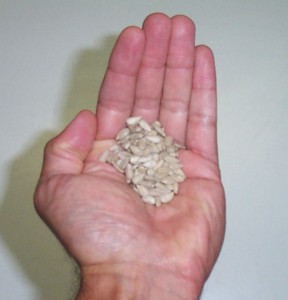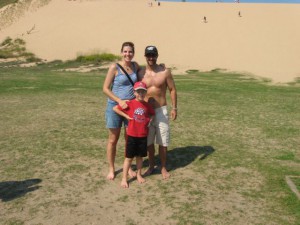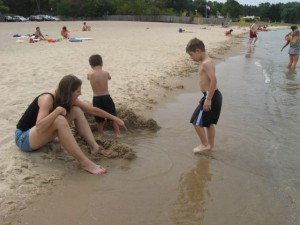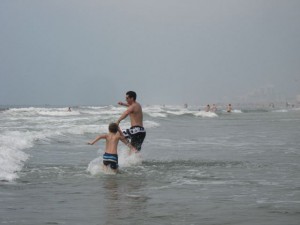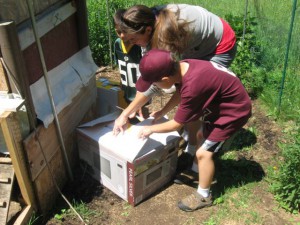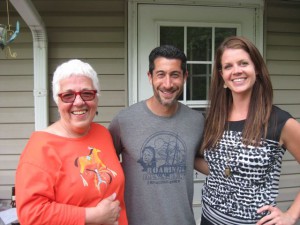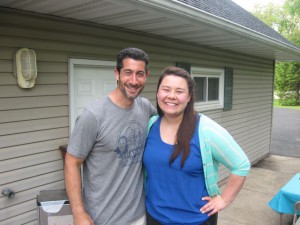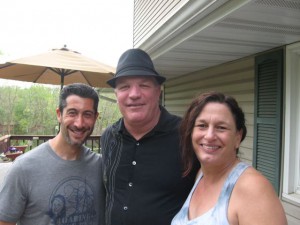Getting Back to the Basics of Leg Training
How do you get stronger legs? Running? Lifting weights? Pilates? Cycling? The answer is YES to all of the above. All of those provide a certain amount of resistance, muscular endurance and range of motion. What exercises work best for you? To answer that, you need to get back to the basics. You need to look at what you are currently doing, how you are feeling and see how well your current program is moving you in the direction of your goal(s).
Whatever exercise, sport or activity you choose just remember that good technique should be safe and effective. It’s not just about running faster . . . if you wind up with a stress fracture in your foot. It’s not about lifting heavier . . . if you compress your spine while doing barbell squats. It’s not about playing tennis longer . . . if your muscles cramp in the middle of the night. Hmm, that sounds a bit too familiar.
Strong legs will help you have a strong upper body. It’s part of your foundation. I remember back in college there was a group of bodybuilders who I’d see and occasionally work out with at the gym. I was 35 pounds heavier than I am now, and even though I wasn’t competing, I had there respect. Except for one guy named Jack. One day he gave me a hard time for not being as strong or muscular as he was. Probably had to do with all of the extra supplements he was taking. Hint, hint, wink, wink. His friends laughed, and then looking at his legs I replied “Whatever, lightbulb.” His friends busted up laughing, and he never said anything critical to me again. Why did I call him lightbulb? Because all he did was work on his upper body. Big top with little legs.
When you work your legs, be sure to check if your hips, knees and ankles are sore or swollen afterward. If so, you’ll definitely want to look at your technique, duration and intensity. You’ll also want to look at your footwear. Oh no, here Eric goes again about shoes. Yup, you better believe it! I can’t tell you the number of times I have seen people in the gym working out and wearing running shoes. Eric, what’s wrong with that? Running shoes are for running. They are not for squats. They are not for lunges. They are not designed to keep your feet flat on the floor. Running shoes have built up cushioned heels and are made to propel you forward. Unless you are running, look for a lightweight athletic shoe with flat soles. Personally, I feel that cross-trainers and tennis shoes are the most comfortable.
Nowadays, it seems like everyone has jumped on the bootcamp/cross-fit bandwagon. Unfortunately, it’s not for everyone. Many of the movements are ballistic and require the participant to already have good body awareness, conditioning, coordination and strength. Sure you can modify and adapt some of the exercises, but often it’s still too intense. So where do you start? At the beginning. Straight leg raises are my personal favorites. You can do them from a standing or lying position, and all you do is lift your leg up and down. No additional weights, no stretch cords. Nada. Just the weight of your leg and your range of motion. If you’re doing them on a mat on the floor, start on your back for your hip flexors, roll to one side, then the other (for adductors and abductors) and then finish with the hip extensions in a kneeling position. Seated leg extensions are awesome for the quads and hips. Just be sure to keep the weight manageable. Lifting too heavy can seriously stress the knees. Leg curls (seated or standing) work the hamstrings and butt. The key thing is to make sure you keep your back flat (not extended) and slowly lower the weights during the eccentric phase. You don’t want to over-extend your knees. Finally, you have your pressing movements. Whatever you want to call them they are all variations squats and lunges. In the the 3rd video below I am demonstrating lunges. If your balance isn’t very good, you can try doing the exercise while holding onto a table or railing. Simply glide your hand forward as you lunge. This will help give you additional stability.
Remember to start light. You can always move the weights up. Try these out and let me know how they work for you.
Sit in a leg extension machine with the pads over the top of your ankles and your back against the back pad. Your knees should be even with the pivoting cam of the machine. Extend your legs up (straightening them), and squeeze at the top. Lower the weight down in a controlled fashion to the starting position. Be sure to exhale as you extend your legs and inhale as you return legs to starting position.
Stand against leg curl machine and hook one leg behind lever mechanism. Hold yourself steady and curl your leg up as high as possible. Keep front thigh pressed firmly against pad and body upright. Be sure that your other knee is slightly bent with your body weight on ball of foot. (This will take pressure off low back.) Exhale as you curl leg up and inhale as you return leg to start position.
Keeping your feet horizontally separated by about six inches, step forward with one leg and lower your upper body down, bending your leg. Do not allow your knee to go forward beyond your toes as you come down, keeping your front shin perpendicular to the ground. Go down until your rear knee almost touches the ground. It is very important to keep your upper body vertical. Push up and back. Repeat with the other leg or do all the reps with one leg then switch. Inhale as you lower your body down and exhale as you push yourself up.

